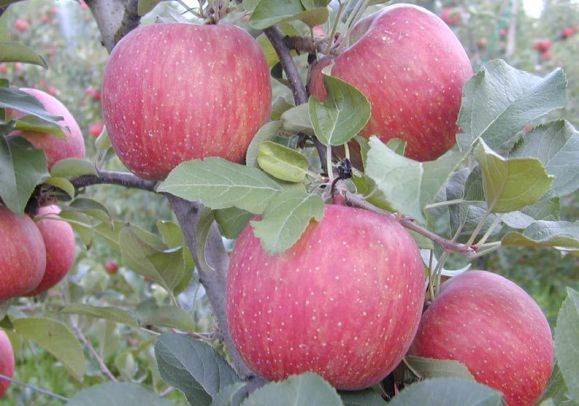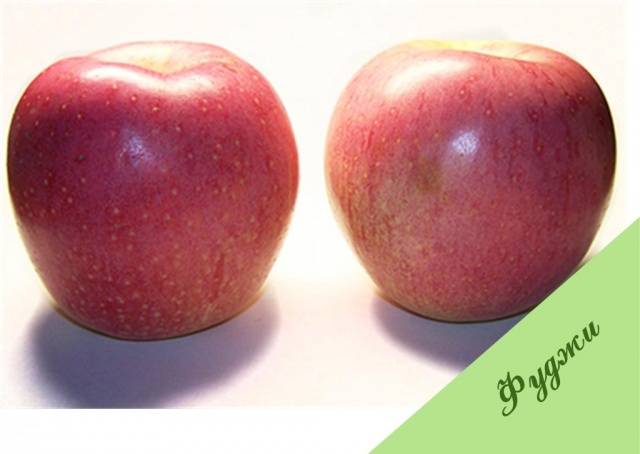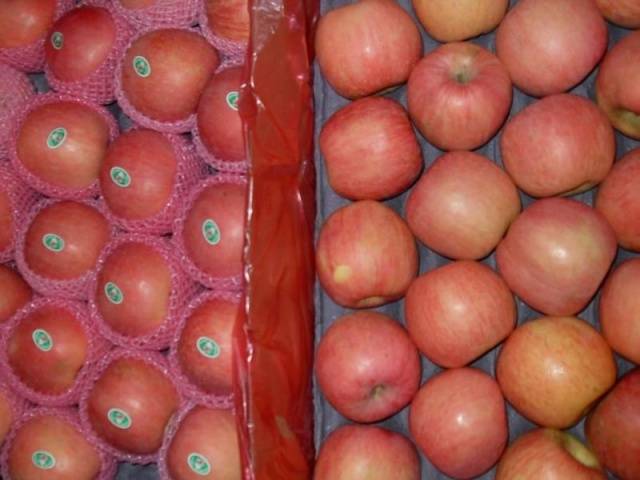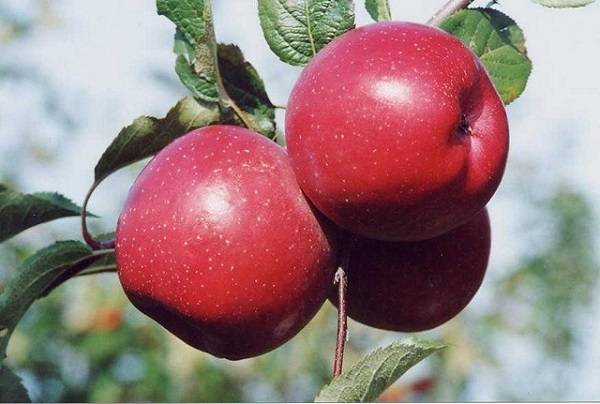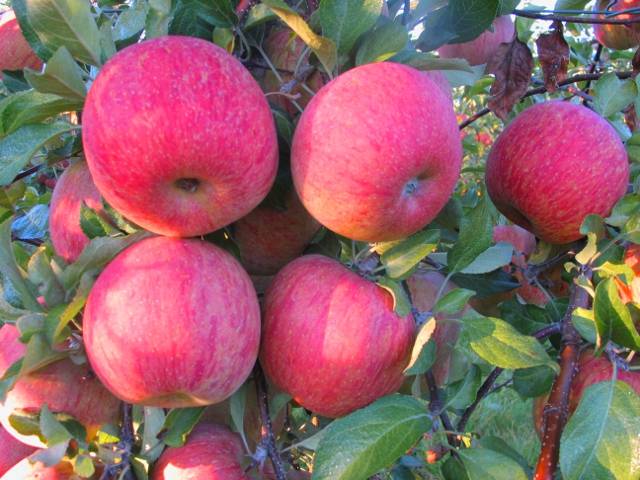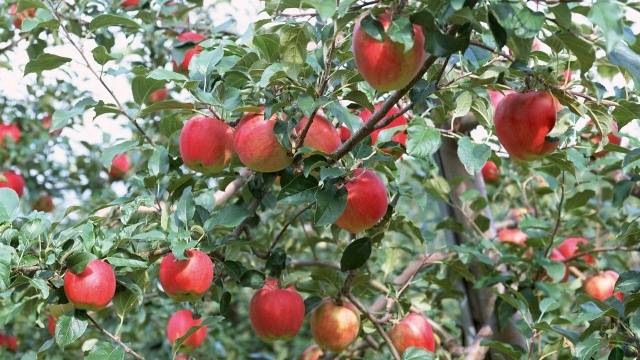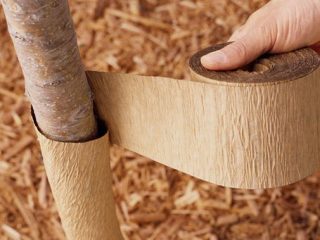Content
Apple trees Fuji varieties are of Japanese origin. But in China and America, special attention is paid to this culture and its clones. For example, in China, 82% of apples grown are of the Fuji variety. A quarter of a century ago, culture was taken up in European countries, in the gardens of Ukraine and Russia.
Fuji apples are distinguished by their honey taste and beautiful appearance. Description, photos and reviews about the variety apple trees You will find Fuji in our article. In addition, we will talk about the features of growing and caring for fruit trees.
Historical facts
The Japanese have been creating the Fuji variety for several years. Breeders took Red Delish and Rolls Janet varieties as parents. The new plant received the best parental qualities.
In the eighties of the last century, Americans became interested in the Fuji apple tree. The fruit tree has adapted perfectly. The people of America liked the unusual honey aroma and exquisite taste.
Many readers are interested in where they grow apples Fuji currently. It should be noted that the distribution area in Russia is quite wide: apple trees are grown even in regions with a sharply continental climate, not to mention the southern regions.
Description
External data
The apple tree is strong, the skeletal branches are powerful.The peculiarity of the plant is that without pruning, the branches grow to the sides, which significantly reduces the yield. According to the breeders' description, the Fuji apple tree should have a round, almost spherical shape. The bark of the trunk is light brown with a grayish tint.
On long shoots, the bark is slightly brighter, without roughness. In a properly formed apple tree, the petioles should be located at an acute angle in relation to the shoots.
Oval leaves with almost imperceptible pubescence and pointed tips. Flowering begins in late April or early May. By the end of leaf fall, large apples glow like lights on bare branches, as in the photo below.
Fruit
The Fuji apple tree is valued for its delicious fruits. At technical ripeness they are bright pink or deep red. Moreover, the coloring of the fruit is uniform. Yellowish dots or greenish blurry stripes are slightly noticeable on the surface. The skin is matte, without shine.
The weight of a Fuji apple, according to the description, as well as reviews from gardeners, reaches 200-250 grams. The fruits are even, one to one. They taste sweet, but they are not cloying. The apples are dense, juicy, crispy. When cut, the flesh is white or creamy.
Apples of this variety are rich in various vitamins and microelements, amino acids, pectin, and fruit sugars. That is why doctors recommend them for dietary and baby food.
Storage Features
The Fuji apple variety is also valued for its excellent storage. If special conditions are created and industrial refrigeration units are available, they can be stored for 12 months without loss of taste.In stock no more than 4 months.
Freshly picked and stored Fuji apples will differ in characteristics after 30 days. Oddly enough, their taste will change for the better. The fruits will become even sweeter, the acid will hardly be felt. During storage, apples ripen. Thanks to their high transportability, apples “scatter” all over the world.
Where can you grow Fuji apple trees?
To ripen apples, you need a lot of sun, otherwise the fruits will not have time to ripen. That is why the central regions of Russia, Belarus and the northern regions of Ukraine are not suitable for growing this variety of apple trees.
But gardeners can try Fuji apple clones:
- Fujik;
- Kiku;
- Yataka;
- Benny Shogun;
- Nagafu;
- Toshiro;
- Aztec.
The fact is that they ripen 14-21 days earlier than the mother variety, but the taste of some clones is even higher.
Clones
Clone Aztec
Fuji Aztec apple tree is a variety of New Zealand breeders. Was received in 1996. The weight of deep red apples, look at the photo, is about 200 grams. The clone, according to reviews from gardeners who grow it, fully corresponds to the description and characteristics.
The pulp is juicy and crispy. The apples taste sweet and sour and are classified as dessert varieties.
The apple tree is strong, tall and has excellent productivity. The fruit tree has average resistance to scab. The fruits ripen in mid-September. They are stored for almost 7 months.
Fuji Kiku
According to consumer reviews, the fruits of the Fuji Kiku apple tree are considered the most delicious among other clones of this variety. Despite the fact that its ripening period is longer than that of Aztec, apples are still harvested 21 days earlier than from the mother variety.
Look at the photo how elegantly large pink apples with red rosy cheeks look, weighing from 200 to 250 grams.
The taste of the early fruiting clone Kiku is also excellent. They are sweet and sour with a slight honey aroma.
Growing the Fuji Kiku variety on an industrial scale:
Planting and care
Often in reviews regarding planting Fuji apple trees and its clones, gardeners note that they bloom, but they are not happy with the fruiting. The fact is that this variety of apple tree is pollinated under certain conditions:
- calm and sunny weather;
- in the presence of pollinating insects;
- if apple trees of other varieties grow nearby, which are pollinators.
The problem of pollination of the Fuji variety and its clones Azteca and Kiku is easily solved if the following apple trees grow in your garden:
- Idareda or Red Delicious;
- Ligol or Golden Delicious;
- Greney Smith; Everest or Gala.
They bloom at the same time as the Fuji apple tree. In addition, the variety itself is capable of pollinating other fruit trees.
Selecting planting dates
Fuji seedlings can be planted in autumn and spring. Autumn planting begins after leaf fall, but before the onset of persistent frosts. The main task of the plant is to take root before it gets cold. As a rule, such work is performed in October. Although even the most experienced gardener cannot name the exact planting date, it all depends on the climatic conditions of the region and the time of winter.
If for some reason it was not possible to plant a new Fuji apple tree in the fall, then you can replenish the garden collection in the spring. The main thing is that the work must be done before the buds swell and the sap begins to flow.In this case, before the onset of hot days, the roots will be restored and the plant will begin to grow.
How to choose a place
As follows from the description and characteristics of the variety, apple trees need a lot of sunlight. Therefore, the planting site should be the south side of the garden.
As for the soil, it should be borne in mind that the apple tree grows quickly, its root system is powerful, and a lot of effort is spent on fruiting. The soil in the planting hole should be fertile, but not dense. Planting a Fuji apple tree is done in the traditional way.
Care
To get a good harvest of apples, part of the ovaries, especially in the first two years of fruiting of the Fuji variety and its clones, must be removed. In this case, the tree will not be overloaded, therefore, the size and taste of the fruit will not be affected.
If we talk specifically about care, it is almost the same for all varieties of apple trees:
- watering and root and foliar feeding;
- weeding and shallow loosening of the soil (the roots are located close to the surface);
- autumn and spring pruning;
- treatment against diseases and pests.
Disease Control
The Fuji apple tree and its clones are good for everyone, but diseases and pests can destroy the crop if treatment is not carried out in a timely manner. The reason is weak immunity.
Most often, trees suffer from:
- bacterial burn;
- scab;
- aphid infestations.
The apple tree must be treated with special preparations before leafing out and before flowering. Experienced gardeners advise using for these purposes: Nitrofen - 300 g per 10 liters, and a 3% solution of Bordeaux mixture.
